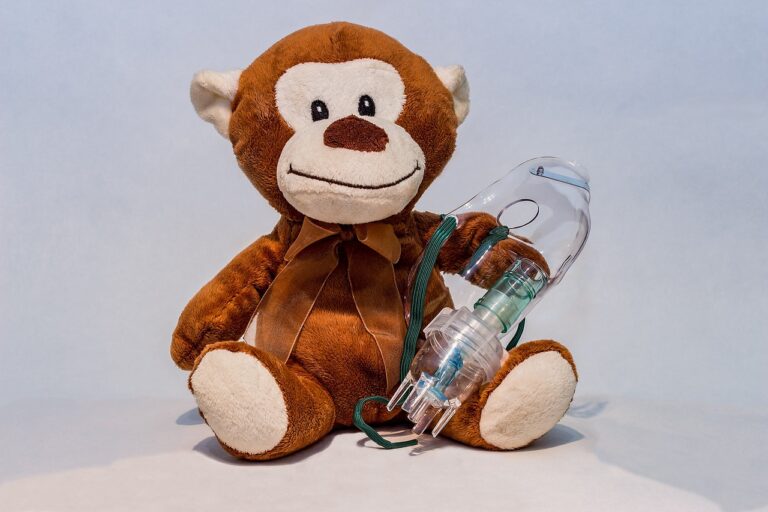The Importance of Peer Interactions in Speech Therapy
world7, mahadev book login, silverexch:Speech therapy is a crucial form of treatment for individuals who have communication disorders. Whether it’s a speech impediment, stuttering, or language delay, speech therapy can help individuals improve their communication skills and boost their confidence. While working one-on-one with a speech therapist is beneficial, peer interactions play a significant role in the success of speech therapy sessions.
Why are peer interactions essential in speech therapy?
1. Peer interactions provide a real-life context for practicing communication skills. While speech therapists can create simulated scenarios during therapy sessions, interacting with peers allows individuals to apply their skills in actual social situations. This real-world practice is invaluable in helping individuals generalize their communication skills beyond the therapy room.
2. Peer interactions offer opportunities for social learning. Communication isn’t just about speaking; it also involves listening, taking turns in conversations, interpreting social cues, and understanding non-verbal communication. Interacting with peers allows individuals to learn and practice these social skills in a natural setting.
3. Peer interactions create a supportive and motivating environment. Building relationships with peers who are facing similar communication challenges can be incredibly empowering. Individuals can share their experiences, offer encouragement, and celebrate each other’s progress, creating a sense of community and camaraderie.
4. Peer interactions promote socialization and friendship-building. For individuals with communication disorders, making friends and forming social connections can be challenging. Peer interactions in speech therapy provide a safe and structured environment for individuals to practice social skills, build relationships, and develop friendships.
5. Peer interactions foster collaboration and teamwork. Many communication goals in speech therapy require cooperation and coordination with others. Working with peers on group projects, games, or activities can help individuals develop their teamwork skills, such as sharing ideas, compromising, and problem-solving together.
6. Peer interactions increase communication opportunities. In a group setting, individuals have more opportunities to engage in conversations, participate in group activities, and practice their communication skills in various contexts. This exposure to different communication situations can help individuals become more flexible and adaptable communicators.
How can speech therapists incorporate peer interactions into therapy sessions?
1. Group therapy sessions: Speech therapists can organize group therapy sessions where individuals with similar communication challenges come together to practice their skills. These sessions can include group discussions, role-playing activities, team-building exercises, and collaborative projects.
2. Peer-led activities: Speech therapists can assign peer-led activities where one individual takes on the role of the leader or facilitator. This not only gives the individual an opportunity to practice their communication skills but also fosters leadership and decision-making abilities.
3. Social skills groups: Speech therapists can create social skills groups that focus on specific areas of communication, such as conversation skills, social cues, emotional regulation, and conflict resolution. These groups provide a structured environment for individuals to learn and practice social skills with their peers.
4. Peer feedback sessions: Speech therapists can encourage individuals to provide feedback to their peers on their communication skills. This feedback can be constructive, supportive, and specific, helping individuals identify areas for improvement and celebrate their strengths.
5. Peer modeling: Speech therapists can pair individuals with communication disorders with peers who have strong communication skills. This modeling technique allows individuals to observe and learn from their peers’ effective communication strategies, language use, and social interactions.
6. Peer mentoring programs: Speech therapists can establish peer mentoring programs where individuals with communication disorders are paired with older peers or mentors who can provide guidance, support, and encouragement. These mentoring relationships can foster personal growth, self-confidence, and social development.
FAQs
Q: How do peer interactions benefit individuals in speech therapy?
A: Peer interactions provide real-life practice, social learning opportunities, a supportive environment, friendship-building opportunities, teamwork skills development, and increased communication opportunities.
Q: Can peer interactions replace one-on-one therapy sessions?
A: Peer interactions should complement, not replace, one-on-one therapy sessions. Both forms of therapy are essential for individuals to make progress and achieve their communication goals.
Q: What if an individual is shy or hesitant to interact with peers in speech therapy?
A: Speech therapists can use gradual exposure techniques, role-playing exercises, social skills training, and positive reinforcement to help individuals overcome their shyness and build confidence in interacting with peers.
Q: How can parents support peer interactions in speech therapy?
A: Parents can encourage and reinforce the skills learned in speech therapy at home, provide opportunities for their child to interact with peers outside of therapy sessions, and communicate with speech therapists to reinforce strategies for peer interactions.
Q: Are peer interactions effective for all individuals in speech therapy?
A: Peer interactions may not be suitable for all individuals in speech therapy, depending on their specific communication challenges, social skills deficits, and comfort levels. Speech therapists should assess each individual’s needs and tailor peer interaction strategies accordingly.
In conclusion, peer interactions play a vital role in enhancing the effectiveness of speech therapy for individuals with communication disorders. By providing opportunities for real-life practice, social learning, support, friendship-building, teamwork, and increased communication opportunities, peer interactions can help individuals improve their communication skills, build social connections, and boost their confidence. Speech therapists should incorporate peer interactions into therapy sessions to create a holistic and enriching experience for their clients.







